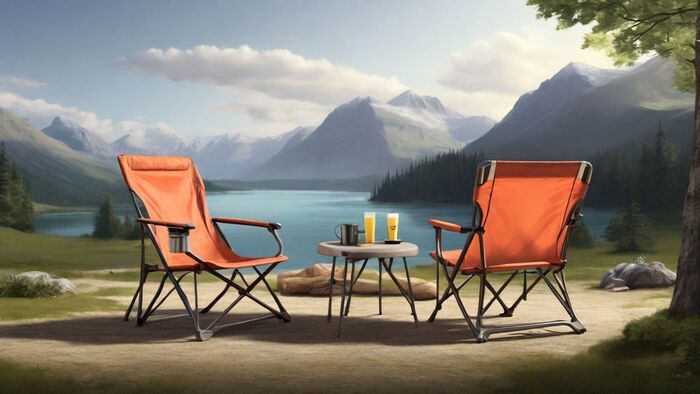The short answer to the question raised in the title of this article is yes, there are indeed eco-friendly camping chair options on the market, and you will see some great examples in the text below. So keep reading.
I believe it’s essential to discuss the rising importance of eco-friendly products, especially for those of us who enjoy spending time in nature.
Camping, by its very nature, is an activity that invites us to connect with the environment more thoughtfully. With an increased consciousness about the impact our gear has on the planet, many of us are turning our attention to how we can maintain harmony with the great outdoors even in our choice of seating.
The concept of eco-friendliness is taking root in the camping community. As campers, we have a unique responsibility to minimize our ecological footprint.
This stewardship goes beyond the leave-no-trace principles and into the realm of what we bring into the wilderness. A camping chair might seem like a small piece in the puzzle of sustainability, but every choice matters. It’s a simple item that can make a big difference.
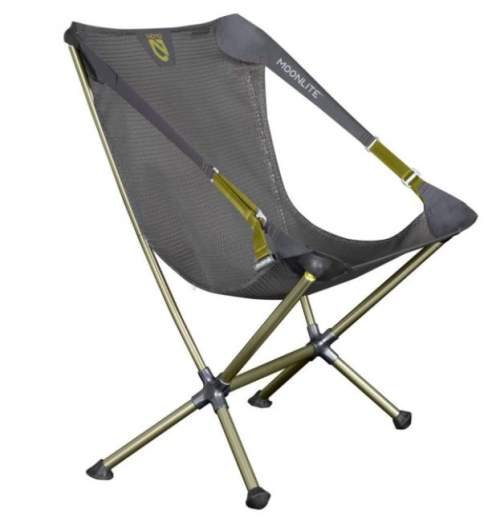
Integrating sustainability into outdoor activities isn’t just about preserving what we love; it’s about actively contributing to a healthier planet.
Each eco-friendly camping chair carried into the wild stands as a statement of personal commitment to the environment. The NEMO Moonlite Reclining Chair shown above is one great example.
This commitment helps to demand and inspire more sustainable practices in the production of outdoor gear, fueling a positive loop of conscious consumption.
In the next section, we’ll delve into what makes a camping chair eco-friendly. You’ll understand the materials you should look for, their environmental benefits, and why making this choice can be a stride toward a more sustainable future.
Knowing this, you’re armed with the knowledge to make an informed decision the next time you’re selecting gear for your outdoor adventures.

Materials Matter: Understanding Eco-Friendly Camping Chair Options
When I think about camping, eco-friendliness might not be the first thing that comes to mind.
But with a surge in environmental awareness, it’s become crucial to consider the ecological footprint of our outdoor gear. And that includes even the seemingly minor choices, like picking a camping chair.
Traditional camping chairs typically rely on materials such as aluminum and synthetic fabrics, which offer durability and low cost.
However, they come with a significant environmental cost due to mining, production, and disposal processes which can be harmful to our planet.
On the flip side, manufacturers that focus on sustainability have developed camping chairs using recycled plastics, natural fibers like hemp, or responsibly sourced wood.
These materials reduce ecological impact and often come with third-party certifications that support their green claims.
Keep an eye out for labels like the Global Recycle Standard, Forest Stewardship Council certification when shopping. Bluesign approved is also currently one of the best known labels of that type. The chair shown above, the REI Co-op Skyward Chair is one of them.
What’s more, selecting chairs made with these eco-friendly materials means you’re not only reducing waste but also supporting the market for recycled and sustainable goods. It’s a step towards a closed-loop system where nothing goes to waste.
The chair in the picture below, the REI Co-op Wonderland Chair, is one example. They claim the fabric is a 100% recycled polyester, and treated with a PFAS-free durable water repellent (DWR).
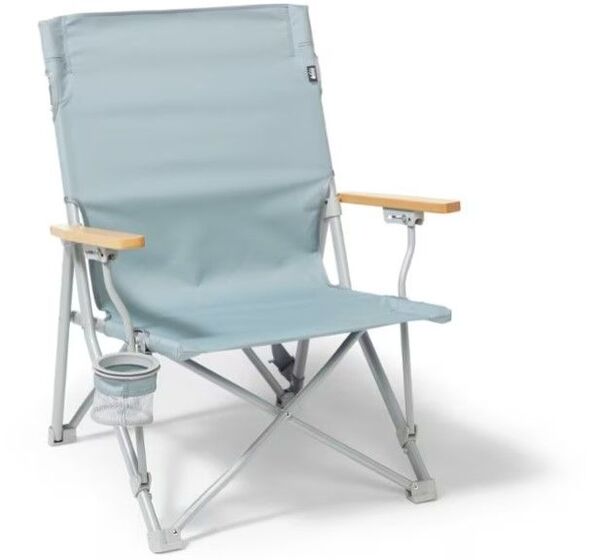
But why stop at materials? Next, I’ll delve into the larger picture: the life cycle of these sustainable camping chairs.
Can they stand the test of time, and what happens when they reach the end of their journey? These questions are just as important for making responsible choices that extend beyond the initial purchase.

From Purchase to Earth: The Lifecycle of a Sustainable Camping Chair
Picking an eco-friendly camping chair is about more than just choosing green materials. It involves understanding the chair’s entire lifecycle, from manufacturing to disposal.
The lifecycle approach considers every phase of the chair’s life, ensuring that each stage, from the extraction of raw materials to the chair’s ultimate fate, is as environmentally friendly as possible.
To make informed choices, you should evaluate the impact of a chair’s creation on the environment. This means looking into:
- The energy consumption during production.
- The distance materials travel to get to factories.
- And even the business practices of the manufacturers.
Preferably, you’d choose companies using renewable energy and ethical labor practices. The mentioned bluesign approved products are in this group.
Many big outdoor companies partnered with bluesign are in the list that has them more than 800. Those include names like Nikwax, Vaude, Salewa, Salomon, Thule, The North Face, Outdoor Research, Osprey, Patagonia, Nemo, Marmot, Berghaus, Jack Wolfskin, Columbia, Deuter, Adidas, and many more.
Durability is a critical aspect of an eco-friendly chair. A sturdy chair that stands the test of time means you won’t need to replace it often, reducing waste.
How to know in advance about its durability, what to look for? Well, check what the manufacturer says about warranty. Those brands that are confident in their products will offer you several years of warranty.
Would you want to know a great example? Check Helinox, this brand is without a match with its 5-year warranty on their camping chairs and other products.
With such a warranty, they demonstrate an incredible confidence in their products. See one of them:
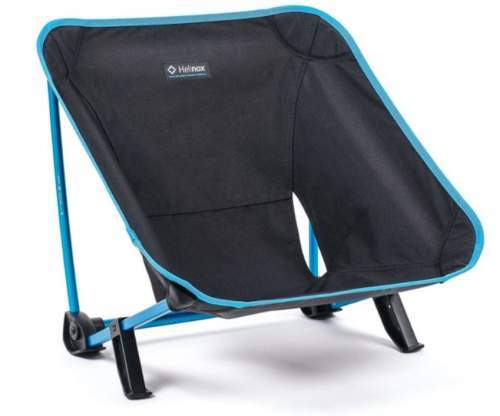
You should also think about the chair’s repairability — can you fix it easily if something goes wrong, can you order a separate part if it is damaged?
At the end of its life, an eco-friendly chair should not become a burden to the planet. So, consider chairs that are recyclable or biodegradable. Many brands offer recycling programs for their products, so watch for this when making your selection.
Leading the Way: Top Picks for Eco-Conscious Campers
When exploring the various eco-friendly options for camping chairs, it’s clear that some brands and models stand out in their commitment to sustainability.
These brands don’t just pay lip service to being ‘green’ – they demonstrate it through their use of materials, production methods, and company practices.
In the text above you have already seen some great examples of brands and their eco-friendly products. They craft their chairs from 100% recycled plastic bottles and uses a low-impact manufacturing process.
Beyond the materials and manufacturing, the user experience matters too. Comfort, durability, and convenience remain top considerations.
I’ve scrutinized customer feedback for these models, and it’s reassuring to see that environmental friendliness doesn’t come at the expense of comfort or functionality.
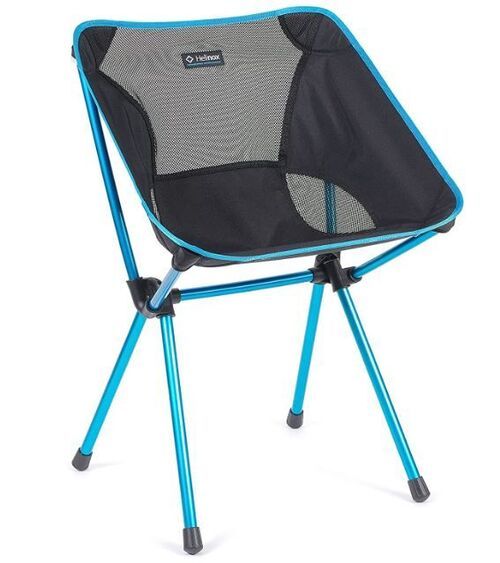
Finally, making the right choice also depends on your own camping style and preferences. Whether it’s a light chair for backpacking or a sturdier option for base camps, take the time to assess your needs against what these eco-friendly options offer.
Remember, by choosing an eco-friendly camping chair, you’re making a small but significant step towards preserving the landscapes we love to explore.
So, go out, find the chair that aligns with both your comfort needs and your values, and savor the great outdoors with the peace of mind that you are part of the solution for a healthier planet.
Thank you for reading. You might want to check also my text about camping tables with built-in chairs.
Let me know if you have questions or comments, there is a comment box below. Bookmark this site and keep as a reference, you will always have new texts added here.

